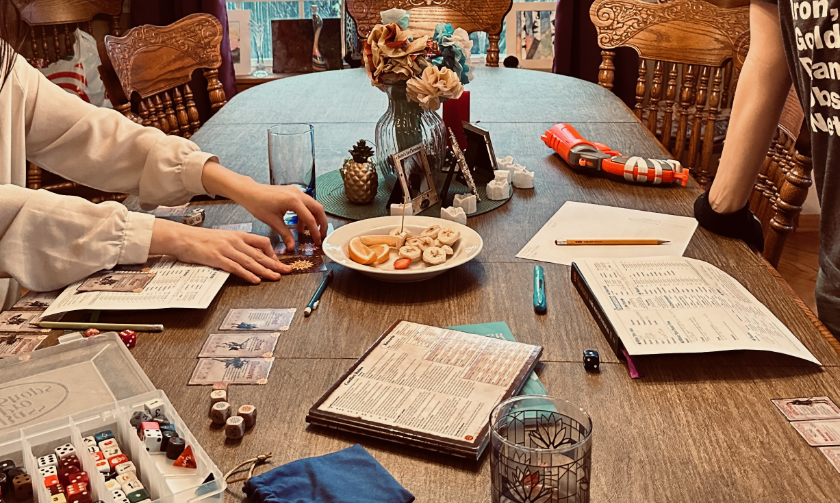As often happens around the holidays, my kids get the LOTR Fever. This is a legitimate diagnosis that stems from our marathon watching of Peter Jackson’s Extended Edition Lord of the Rings movies on New Years Day. It leads to a sudden uptick on related board games, audiobook listens, and this year, a request to play D&D.
Well, something D&D like, because they find it boring and disempowering. The last time they asked me to run D&D for them, we tried the new 5E Ravenloft, and after a skeleton battle that lasted the entire time we played, we stopped. A family of people with ADHD does not do well with the plodding pace of the systems in play for any version of D&D, so we turned to one of my favorites, Torchbearer 2E.
If you are unfamiliar, it is a brilliant game from several years ago by Luke Crane and Thor Olavsrud that combines the mechanical cleverness of their Mouseguard RPG with the classic dungeon delve of your old school D&D. They seasoned it with a heavy dose of their own opinions on the genre honed in the pits of their Burning Wheel experience ,and out of the oven came a fast, easy to play, focused RPG. It’s perfect for the aforementioned ADHD problem.
And so, our intrepid Theurge (cleric and paladin shaken in a box) and Burglar (a hobbit) descended into the Barrow Downs, for which I used the introduction adventure, The Dread Crypt of Skogenby. It worked perfectly as an stand in, as does much of Torchbearer, for Middle Earth in the Third Age before the War of the Ring. The Theurge becomes a worshiper of the Valar rather than the Lords of Chaos and Law, and Magicians become Lore Masters. Easily done.
What wasn’t easy was keeping myself from laughing at my kids. See, a central conceits of Torchbearer is that the outcome you are trying to achieve in a conflict isn’t just hitting stuff until it stops moving. It in fact uses the same basic mechanics for all conflicts, even if the adversary you face is way bigger than you, you have options. This optionality meant that after they nearly lost in a fight to destroy some tomb guardians in the beginning of the adventure, they reassessed their strategies going forward.
Which gets us to the second conceit of note here, the Grind. In Torchbearer, the Grind is the mechanical representation of the rough life of digging into dungeons in search of treasure. As you progress in the game, the world wears on you, making things harder, unless you rest. The kids picked up on that quick, and after the aforementioned fight, they took the little bit of treasure and headed right to Bree rather than try to struggle forwards. It was the smart move.
So when they went back in our next session and they eventually found the awakened undead there, they decided to try and trick it rather than bash it in the head. They got what they wanted, but had to compromise, and are now in service of this thing. That is the last conceit of the game, it always moves forward. You never fail a roll and not get the thing, you fail a roll (or rolls) and get the thing, but with a Twist or Condition you have to deal with.
Defeats never feel like dead end alleys. The kids continue to craft their own story and the road goes ever onward…

